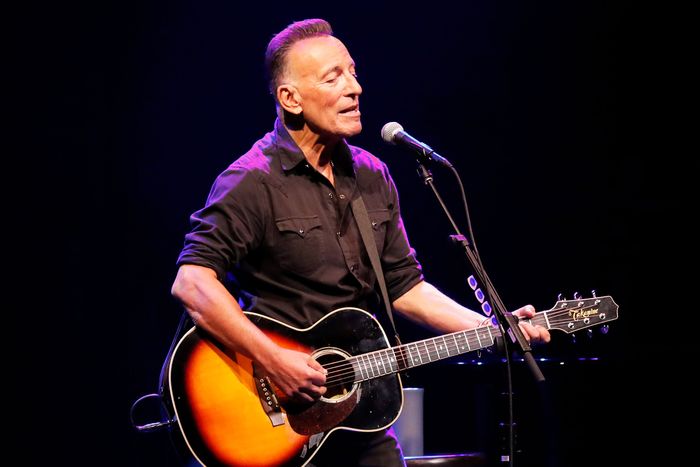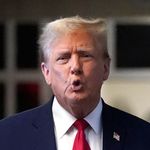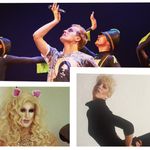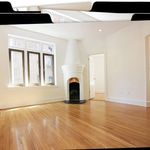
It was, predictably, an unpredictable night at the St. James Theatre. Saturday, June 26, was the first time a Broadway theater opened after 471 days’ darkness, and the first show up was a ten-week return engagement for Springsteen on Broadway, Bruce Springsteen’s one-man-plus-a-cameo show that ran for a year in 2017. (Last time out, it was at the Walter Kerr.) If you’re used to the jostling buzz of a theater-district block at ten minutes to eight, this one was frankly weird: every other theater silent, this one bustling.
In fact, more than bustling, because there was a protest outside. Jujamcyn Theatres, the owner of the St. James, is requiring everyone to show proof of vaccination before entering, and perhaps 50 angry anti-vaxxers chanted and waved signs comparing Springsteen, ludicrously, to a segregationist. Once you made your way through the shouters and into the lobby, though, you found yourself among a crowd that was primed, if not almost desperate, to be swept away by the performance. This had been a tough ticket to get for most concertgoers. (Although I did chat with one audience member, a woman named Leslie Bee, who had bought a single ticket that very afternoon. “It’s a birthday trip from San Francisco,” she explained, “and I looked today, and I got it” — a one-in-a-million shot, a good aisle seat.)
Walking down that same aisle, you could spot a scattering of famous faces. Pete and Chasten Buttigieg were there, near the front. So was Brian Williams. Phil Murphy, the governor of New Jersey, was bounding around, cheering on his state’s most prominent ambassador. Jordan Roth, the president of Jujamcyn, came through, greeting the VIPs and beaming. (Also, randomly, Steven Seagal.) Each of those arrivals occasioned a very minor rumble in the room — and then, a few minutes before showtime, an absolute roar swept through the theater. It marked the arrival of Stevie Van Zandt, royal guitarist of the E Street Band, there to cheer on his boss, the Boss. He took his seat somewhere around the fifth row, and the house lights dropped.
I won’t recap the show at length, because my colleague Craig Jenkins reviewed it beautifully during the first run, and the main trunk of the performance is similar. But there were a few tweaks and alterations reflecting the moment, particularly around the beginning and end. “We’re all unmasked, sitting next to each other,” Springsteen said, joyfully, near the top of the show. He’s been lucky, he noted: His people are healthy, with no real crises. But still, he added: “Seventy-one years on the planet, I’ve never seen anything like this.” And also, he said with a sly smile, “I got arrested.” (Big friendly we’re-with-you laugh from the crowd.) “Then I had to go to Zoom court. … And my case was The United States of America v. Bruce Springsteen! That’s always comforting to hear.”
The show isn’t a greatest-hits reel or a brisk concert; it’s a set of monologues recounting his upbringing and life experiences, knitting together performances of songs related to those moments. It’s an emotional and quite moving program, not least because we’ve all gone through such loss — of people, of institutions, of human contact — in the past year. He talked about his father, now long gone; he talked about his mother, now 95 and “ten years into Alzheimer’s,” to a long ohhhhh from the crowd. “She can’t talk, she can’t stand.” But, he said, she still has the urge to dance when music comes on. Patti Scialfa, Springsteen’s longtime bandmate and wife, comes on for a couple of songs, including a slinky duet on “Fire,” but otherwise it’s all Bruce all the time, for two hours and 20 minutes. His arena shows traditionally go a lot longer than that, but this delivered a different kind of intensity, provided by the close quarters and comparatively small house: It was more overscale cabaret than small stadium. (It seats about 1,700.) There’s a lot of talk, to the point where there aren’t actually all that many songs over the course of the evening, and quite a few of them aren’t his biggest hits. You won’t encounter “Born to Run” here. (He does do “Born in the U.S.A.,” but it has been completely remade, musically, to resemble its original form; the fist-pumping upbeat treatment that so many people mistook for rah-rah patriotism is gone.) Instead you’ll hear “American Skin (41 Shots),” his song about the Amadou Diallo murder that is more than two decades old and has found a grim new relevance.
There’s a longish monologue toward the end of the show, much of it new, in which he talks about people and things now gone: his father, his bandmate and brother-by-choice Clarence Clemons. “Souls remain in dusty space,” Springsteen says, and that eventually leads to a recitation of the Lord’s Prayer, recited after a couple of wisecracks about his Catholic upbringing. It tees up a performance of his new song “I’ll See You in My Dreams,” closing the show.
On my way out, after the applause finally subsided, I fell into conversation with two father-and-son fans from Staten Island, Mike Neely and his son, Mike Neely Jr. They’ve seen Springsteen do arena shows in the past. Mike Sr. had even been at the previous Broadway run’s closing night. Mike Jr. had hauled himself out of a postoperative bed rather than miss tonight. And this show, they both said, was different. “More emotional,” Mike Jr. told me. “You know how people talk about his shows as a religious experience? I got that.” And as I made my way down 44th Street, I overheard one more audience member say, succinctly, what a lot of people were feeling. “That was the show to bring back Broadway.”





